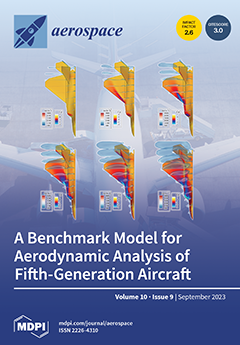The atmospheric total water vapor content (
TWVC) affects climate change, weather patterns, and radio signal propagation. Recent techniques such as global navigation satellite systems (GNSS) are used to measure
TWVC but with either compromised accuracy, temporal resolution, or spatial coverage. This
[...] Read more.
The atmospheric total water vapor content (
TWVC) affects climate change, weather patterns, and radio signal propagation. Recent techniques such as global navigation satellite systems (GNSS) are used to measure
TWVC but with either compromised accuracy, temporal resolution, or spatial coverage. This study demonstrates the feasibility of predicting, mapping, and measuring
TWVC using spread spectrum (SS) radio signals and software-defined radio (SDR) technology on low Earth-orbiting (LEO) satellites. An intersatellite link (ISL) communication network from a constellation of small satellites is proposed to achieve three-dimensional (3D) mapping of
TWVC. However, the calculation of
TWVC from satellites in LEO contains contribution from the ionospheric total electron content (
TEC). The
TWVC and
TEC contribution are determined based on the signal propagation time delay and the satellites’ positions in orbit. Since
TEC is frequency dependent unlike
TWVC, frequency reconfiguration algorithms have been implemented to distinguish
TWVC. The novel aspects of this research are the implementation of time stamps to deduce time delay, the unique derivation of
TWVC from a constellation setup, the use of algorithms to remotely tune frequencies in real time, and ISL demonstration using SDRs. This mission could contribute to atmospheric science, and the measurements could be incorporated into the global atmospheric databases for climate and weather prediction models.
Full article





